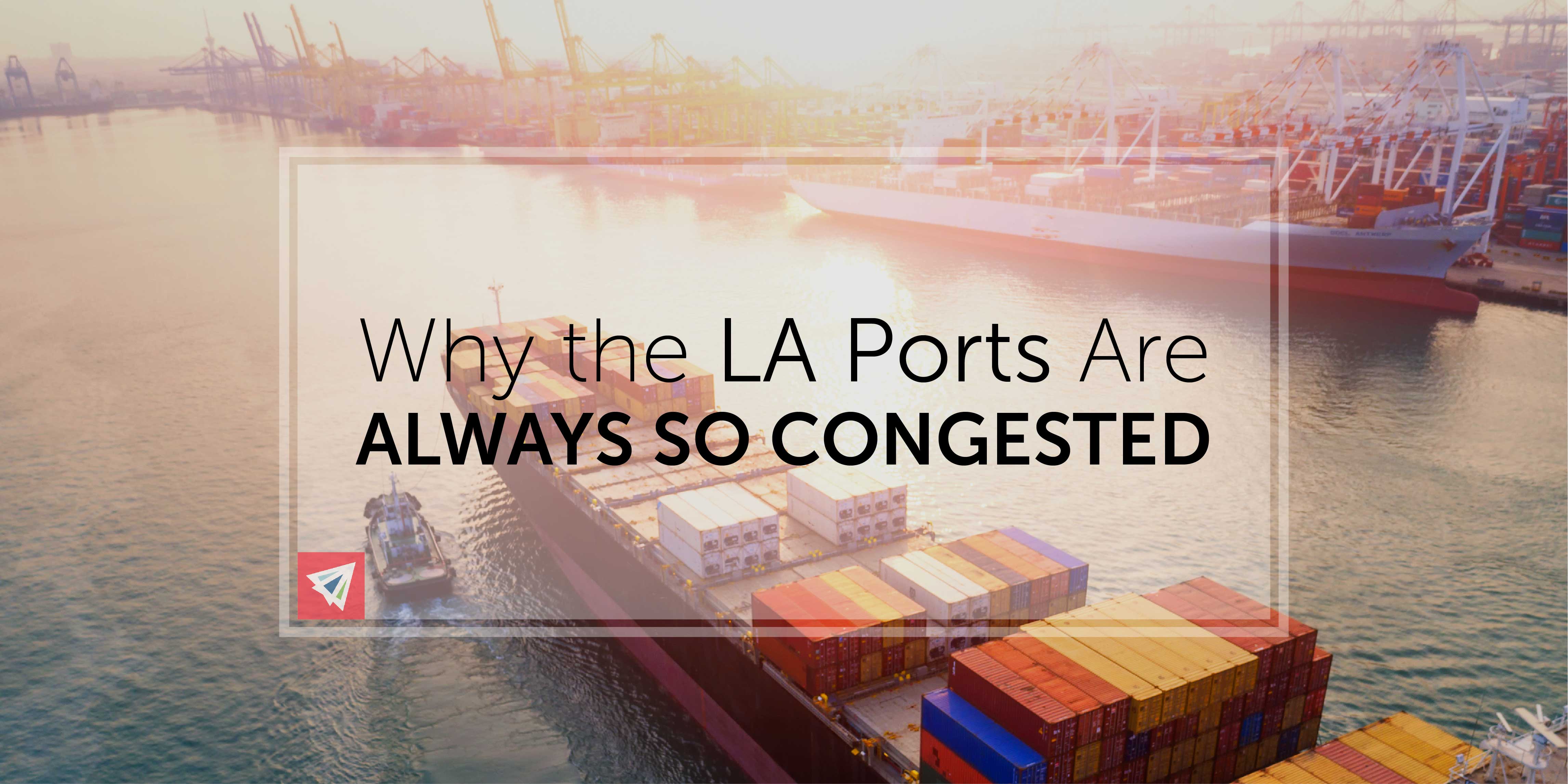Anyone who works with imports knows that the ports of LA and Long Beach are very congested. In fact, that’s most likely an understatement of the issues currently present. According to international trade statistics, 40% of all cargo that comes to the U.S. is routed through the ports of LA and Long Beach. This simultaneously contributes to more congestion and higher shipper frustration, as congestion leads to delays, which ultimately leads to higher costs and missed deadlines.
Trucking cargo out of LA ports is becoming increasingly difficult and untimely. Many sources are referring to the congestion as being in the worst state it has experienced. Terminals are full due to backlogs of large vessels and the tedious task of unloading each one.
Why LA Ports Are Always Congested
If you are currently experiencing frustrations regarding your cargo arriving but not available or receiving per diem charges at the LA or Long Beach seaports, here are a few reasons for the port congestion:
1) Chassis Shortage
It used to be the responsibility of carriers to provide a chassis for their shipments entering the U.S., but times have changed since the Great Recession when carriers sold their chassis to stay alive. We have now entered what many shippers refer to as “the chassis crisis.”
One of the primary reasons for the port congestion at the LA and Long Beach seaports is the lack of chassis. Many steamship lines have written on the congestion at the LA seaport, listing chassis shortage as one of the primary reasons for the phenomenon.
While the ports remain operationally efficient, in that their practices and workforce follow a process to eliminate wasted time, there’s not much that can be done to speed up workflow when no chassis are available.
2) Trucker Shortage
Everyone knows it – truckers are few and far between, and hard to book when you have tons of cargo. When boatloads (literally) of cargo arrive at the LA ports, it is as much the responsibility of chassis as it is truckers to get the goods out of the terminals. With the major trucker shortage that the U.S. is experiencing, this continues to contribute to the high congestion levels at the LA port.
This unfortunately relays negative consequences to shippers. The longer a container sits at the port to be picked up, the more likely you are to be hit with fees for storage in excess of your allotted free days. The best way to avoid this is to make sure your cargo is booked well in advance. Finding “last minute” truckers is not an option these days.
3) Peak Season
Turns out that Rudolph and his team of sleigh runners don’t take care of all those parcel shipments. In fact, Santa books with the same airlines and SSL’s as the rest of us (p.s., he’s probably using a continuous bond to cut shipping costs.)
Peak season contributes greatly to the congestion at the LA seaport. Leading up to holiday seasons, as well as the month of August tend to be the busiest times for U.S. sea ports, and with 40% of all ocean cargo imported being routed through Long Beach and it’s sister port, LA, this causes for massive backlogs of ships and delayed containers.
4) Big Ships and SSLs
Seriously, bigger isn’t better – for U.S. seaports that is. If you have worked in the industry for a reasonable amount of time, you know that SSLs are continually merging and buying each other out. This creates a smaller market of incredibly large ocean carriers. Because these alliances and companies have more cargo and money than they know what to do with, everyone is trying to create their own titanic – cargo style.
The unfortunate result of bigger ships and larger carriers is, well… bigger ships and larger carriers. Ports can’t keep up with the volume and frequency of ships that are arriving in LA, and so shippers have to sit and wait for their containers to be ready for delivery. And then they have to find a chassis, trucker who’s available, etc.
Conclusion
Chassis and trucker shortage, peak seasons, and the sheer volume of containers that current SSL’s are able to carry on their ships all contribute to the congestion at the LA seaport. The fact that 40% of all ocean cargo that enters the U.S. comes through the ports of Long Beach and LA further backs up these West Coast seaports.
If you are currently importing cargo via Long Beach or LA ports and are tired of delays, give one of our team members a call and we would be happy to work out a different routing plan and schedule with you to optimize your shipping practices. Our team is greatly experienced with imports and exports and are well equipped to create a strategic plan for your company!

2 thoughts on “Why LA Ports Are Always Congested”